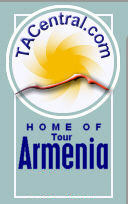The Kurdish community in Armenia is small but active. There are an estimated 30,000 Kurds living in Armenia in some 21 villages, mostly in the Aragatsotn region about 20 miles northwest of Yerevan. Others are around Aparan and Talin.
There is some debate on this, but it seems evident there is a difference between Christian or Muslim Kurds living in Armenia and the Yezidis, who are Kurdish by blood but who have a unique religion.
Armenian Muslim Kurds are Sunni, and primarily shepherds, who in summer live in tents while minding flocks along the hillsides near Mount Aragats. One Kurdish family lives close to the peak of Mount Aragats – the highest place in Armenia. Many Kurds in Armenia live a half-nomad life – they bring sheep each spring to the fresh pastures, where they stay until autumn.
The following is from the Red Book of Peoples of the USSR (http://www.eki.ee/books/redbook/kurds.shtml):
Anthropologically the Kurds belong to the Balkano-Caucasian Caspian type of the European race akin to the Azerbaijanis, Tats, Talysh etc. The language Kurdish is an Indo-European language which belongs to the northwestern Iranian branch and is divided into several dialects. The Kurds of Caucasia and Central Asia speak the kurmandzh dialect.
History
It is not known when the Kurds first appeared in the Caucasus but single tribes were there from time to time, possibly on the look-out for better pastures. From the 10th to the 12th century the area between the rivers Kura and Arax was ruled by a Shaddadid dynasty of Kurdish ancestry.
A more extensive resettlement of Kurds, from Kurdistan into Transcaucasia, started only at the beginning of the 19th century, after the incorporation of Transcaucasia into Russia. Relations between the Kurds and the Persian and Turkish authorities had always been extremely bad, the Kurds persecuted and exterminated by the thousands (a situation that has not improved even by the end of the 20th century), which led some Kurdish tribes and smaller groups to try and find refuge in Russia.
They were allocated land and villages which, for one reason or another, had become uninhabited. For example, 600 families settled in Karabakh in 1807. The number of migrants increased steadily until the first decades of the 20th century. The Armenians and Kurds were granted certain resettlement privileges after the Russian-Persian wars (1804--1813 and 1826--1828), especially after the Turkmanchai Treaty of 1828. The majority of Kurds settled in Armenia after the Crimean War of 1853--1855 and after the Russian-Turkish War of 1877--1878.
A nomadic or semi-nomadic life was the norm until the establishment of Soviet power in 1920. Each tribe had its own herding routes -- in spring up to the mountain pastures, in autumn down again. Usually the pastureland was state-owned and the Kurds had to pay rent. Often, the lands were on long-term private lease, for example in the hands of Russian generals, who also pocketed the land tax.
The archaic tribal system and way of life was preserved longest by the nomadic herders who fervently maintained the old customs. The Yezidis were especially conservative. The nomadic herders for a long time retained the black-cover Kurdish tent. In winter and in permanent settlements the farmers lived, just like other ethnic groups, in traditional earth dwellings or even caves dug into the mountain sides. Low clay and stone houses used to be built, in which the living quarters were under the same roof with the cowshed and stable. It was a feature peculiar to the Kurds to have no walled-in courtyard.
The most noticeable external change of sovietization had taken place in the type of dwelling. Now the Kurds live in standardized. Some distinctive features still remain; in the Ararat Valley Kurdish houses differ from those of the locals by the absence of a terrace and a wine-press room. A distinctive feature of today's Kurdish women is their exceptional attachment to the national costume in Caucasia as well as in Central Asia.
The clothes of Muslims and Yezidis are somewhat different. The Kurdish women like bright contrasting colours while a white shirt is trademark of the Yezidi. The men gave up traditional dress in the middle of the 20th century.
The status of Kurds varies from place to place. The nationalist movement is the strongest in Armenia where the Kurds have always been better treated than elsewhere. The Kurdish position was discussed there as early as the 1920s and in 1925 Armenia hosted the First Congress of the Transcaucasian Kurds.
The Kurdish language is mainly taught in the Aparan and Talin Regions of Armenia where Kurdish population is large.
There is a Kurdological Department of the Institute of Oriental Studies at the Yerevan State University and a Kurdish Writers Union of Armenia. The Kurdish paper Ria Taza (New Way) has been printed since 1930, and there are daily radio broadcasts in Kurdish.




